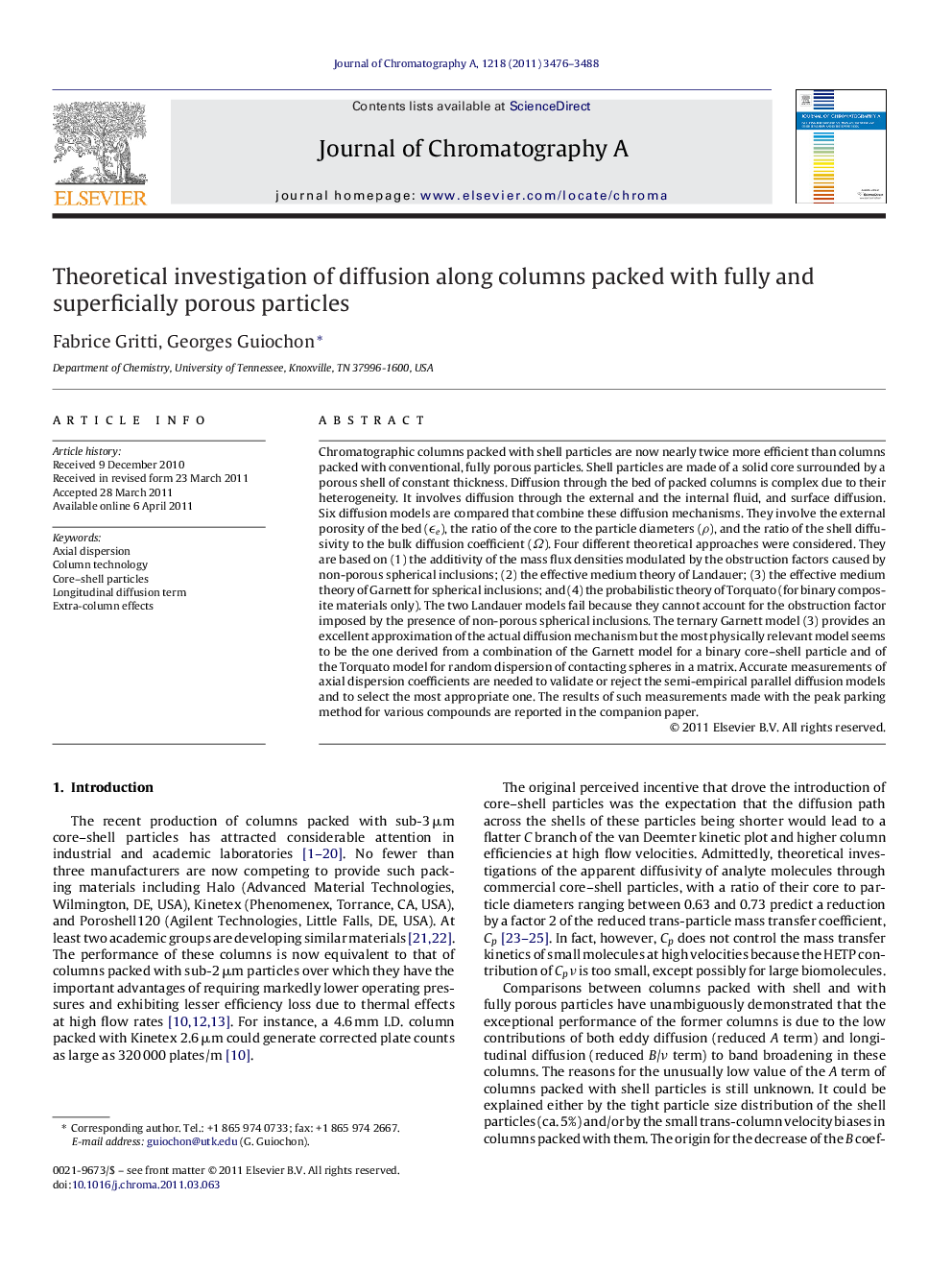| Article ID | Journal | Published Year | Pages | File Type |
|---|---|---|---|---|
| 1204266 | Journal of Chromatography A | 2011 | 13 Pages |
Chromatographic columns packed with shell particles are now nearly twice more efficient than columns packed with conventional, fully porous particles. Shell particles are made of a solid core surrounded by a porous shell of constant thickness. Diffusion through the bed of packed columns is complex due to their heterogeneity. It involves diffusion through the external and the internal fluid, and surface diffusion. Six diffusion models are compared that combine these diffusion mechanisms. They involve the external porosity of the bed (ϵe), the ratio of the core to the particle diameters (ρ), and the ratio of the shell diffusivity to the bulk diffusion coefficient (Ω). Four different theoretical approaches were considered. They are based on (1) the additivity of the mass flux densities modulated by the obstruction factors caused by non-porous spherical inclusions; (2) the effective medium theory of Landauer; (3) the effective medium theory of Garnett for spherical inclusions; and (4) the probabilistic theory of Torquato (for binary composite materials only). The two Landauer models fail because they cannot account for the obstruction factor imposed by the presence of non-porous spherical inclusions. The ternary Garnett model (3) provides an excellent approximation of the actual diffusion mechanism but the most physically relevant model seems to be the one derived from a combination of the Garnett model for a binary core–shell particle and of the Torquato model for random dispersion of contacting spheres in a matrix. Accurate measurements of axial dispersion coefficients are needed to validate or reject the semi-empirical parallel diffusion models and to select the most appropriate one. The results of such measurements made with the peak parking method for various compounds are reported in the companion paper.
